Do you have a question about the LG Flatron L1753S and is the answer not in the manual?
Details of LCD panel specifications like pixel pitch and color depth.
Defines optical properties such as viewing angle and luminance.
Covers video input signals and timing chart references.
Specifies the highest display resolution supported by the monitor.
Information on AC input, power consumption modes, and LED indicators.
Details operating temperature, humidity, and MTBF for the unit.
Provides monitor dimensions with tilt and swivel adjustments.
Lists net and gross weight for different monitor models.
Highlights critical safety components requiring specific replacement parts for hazard prevention.
Guidelines for safely handling the LCD module and backlight unit during service.
Emphasizes caution regarding high voltage, especially with inverter circuits and CCFLs.
Procedure and circuit diagram for checking leakage current in the monitor.
Basic rules and practices for safe and effective servicing of the monitor.
Methods to prevent damage to sensitive components from static electricity.
Detailed procedures for soldering and unsoldering electronic components safely.
Specific steps for removing and installing Integrated Circuits on circuit boards.
Procedure for removing and replacing small-signal transistors, including lead bending.
Steps for replacing power output transistors, including heat sink management.
Guidelines for removing and installing diodes, noting polarity and connection methods.
Instructions for replacing fuses and conventional resistors, emphasizing spacing.
Method for repairing damaged copper patterns at IC connections using jumper wires.
Technique for repairing defective copper patterns at non-IC connections with jumper wires.
Placing the monitor on a soft pad for safe disassembly procedures.
Steps to detach the monitor stand by twisting and pulling specific points.
Procedure to separate the main monitor unit from its stand assembly.
Procedure to remove screws securing the monitor's front and rear casing.
Steps to carefully open the front cover and release internal latches.
Procedure for disassembling the back cover of the monitor to access internal components.
How to release four latches on the stand bottom to separate the body and base.
Instruction to push stand latches inward for restoration after repair completion.
Securing the stand body during disassembly to ensure proper latch release.
Locating and pushing internal latches to separate the monitor stand components.
Pushing the base in the opposite direction to detach it from the stand body.
Checking that the monitor stand components have been successfully separated.
Explains signal amplification, digital conversion, and scaling processes.
Details voltage regulators, inverter power, and LCD panel supply circuits.
Describes the microcontroller's role, EEPROM storage, and sync signal handling.
Explains the function of EMI components, rectifiers, transformers, and feedback circuits.
Instructions for copying and running UserPort.exe for monitor port setup.
Steps for reading, editing, and writing EDID data using WinEDID.exe.
Procedure to access the Service OSD menu by power cycling the monitor.
Lists available service options like Auto Color, NVRAM Init, and Aging mode.
Flowchart for diagnosing power issues, checking voltages and key controls.
Troubleshooting steps for no raster/OSD display related to LIPS power.
Troubleshooting steps for no raster/OSD display related to MSTAR scaler.
Steps to troubleshoot Digital Power Management (DPM) issues, checking sync pulses.
Diagnostic flow for power supply problems, checking fuses, voltages, and waveforms.
Troubleshooting steps for raster display problems, checking power rails and scaler outputs.
List of capacitors and integrated circuits for the main board with part numbers.
Part numbers for transistors and resistors on the main board.
Replacement parts list for diodes and zener diodes used on the main board.
List of capacitors and ICs used on the power board with part numbers.
Part numbers for diodes and transistors found on the power board.
Listing of resistors, transformers, and other miscellaneous components.
Detailed schematic for the scaler IC (U201) and associated support components.
Schematic of the power supply and wafer components including regulators and connectors.
Schematic showing the inverter control IC (U301) and lamp drive components.
Detailed schematic of the Switched-Mode Power Supply (SMPS) circuit.
| Screen Size | 17 inches |
|---|---|
| Display Type | LCD |
| Resolution | 1280 x 1024 |
| Aspect Ratio | 5:4 |
| Brightness | 300 cd/m² |
| Contrast Ratio | 700:1 |
| Response Time | 8 ms |
| Input Connectors | VGA |
| Panel Type | TN |
| Viewing Angle | 160° (horizontal), 160° (vertical) |
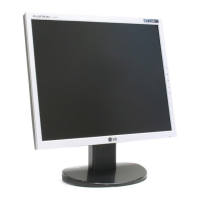
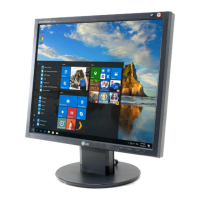
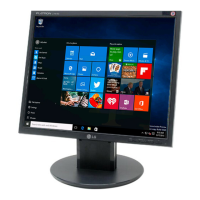
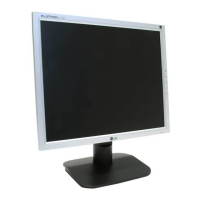
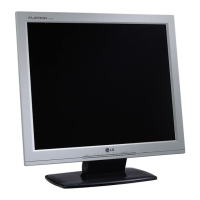
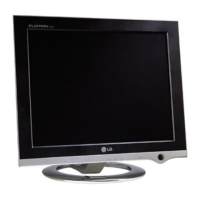


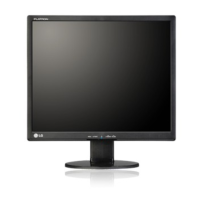
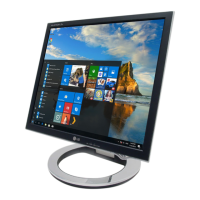
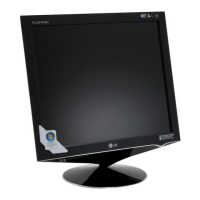
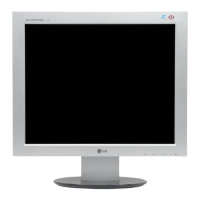
